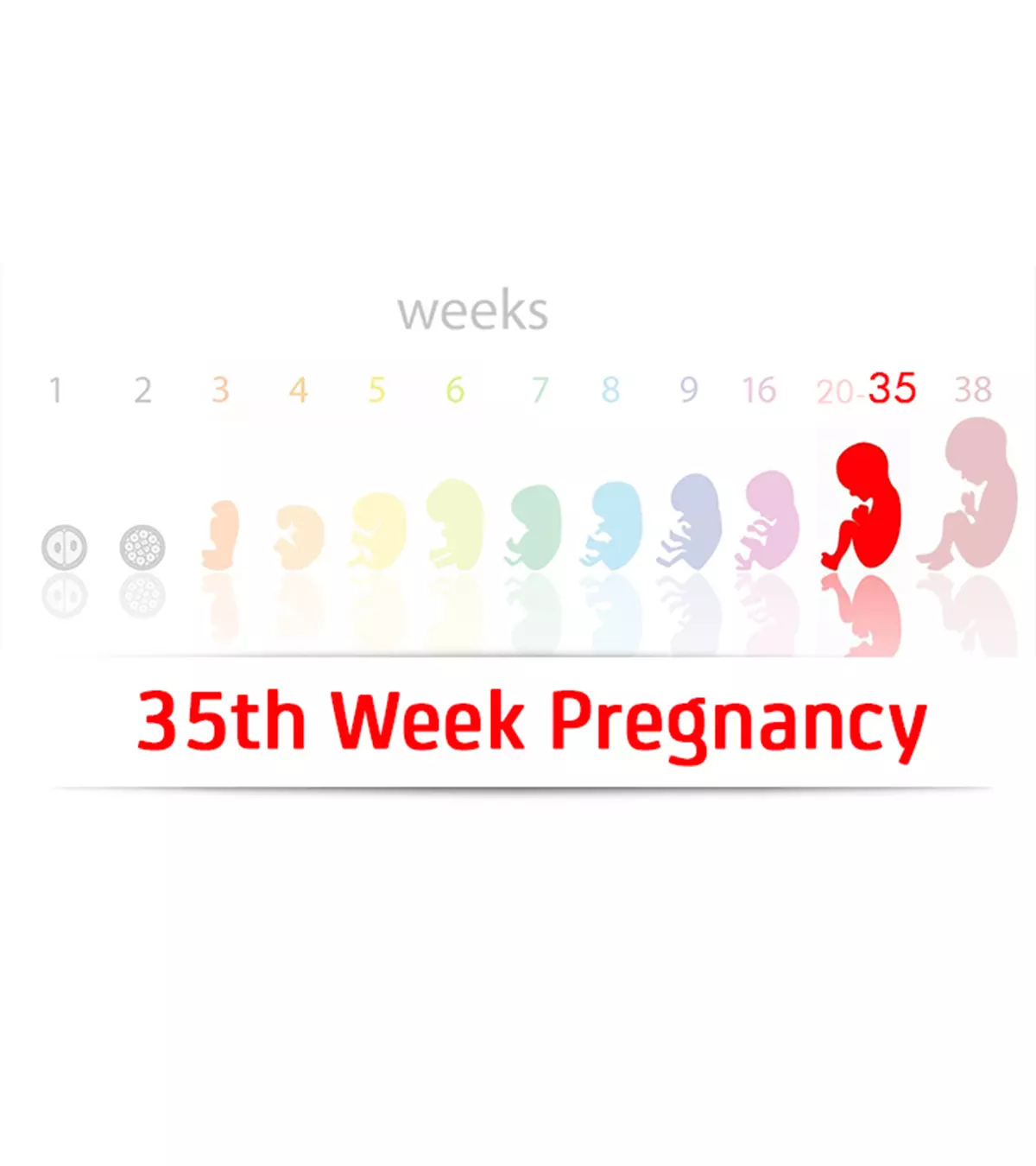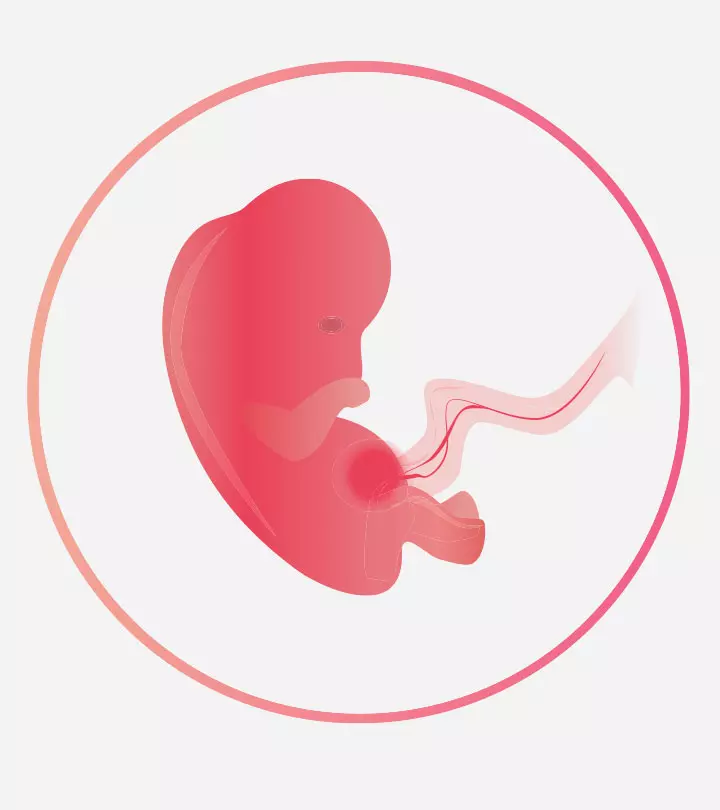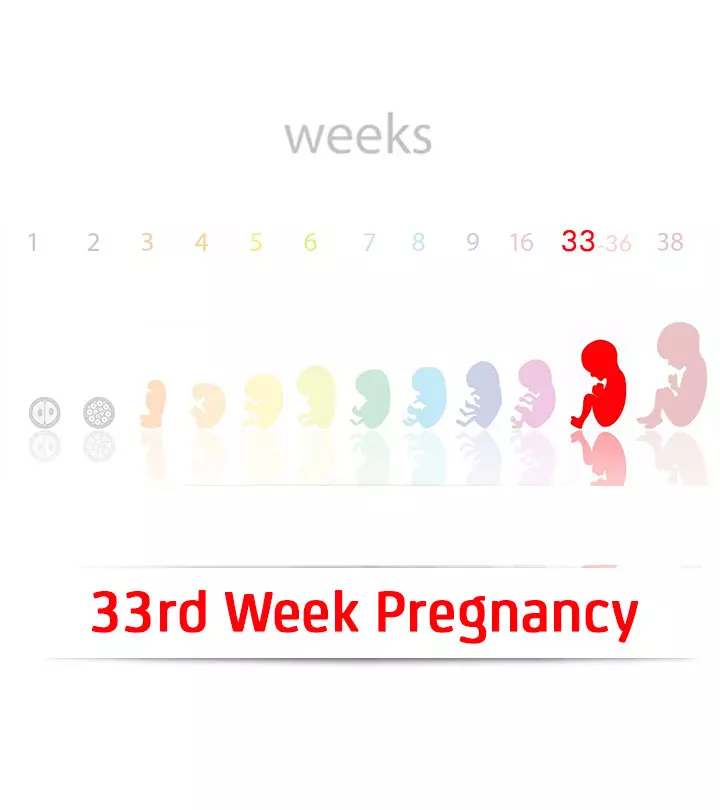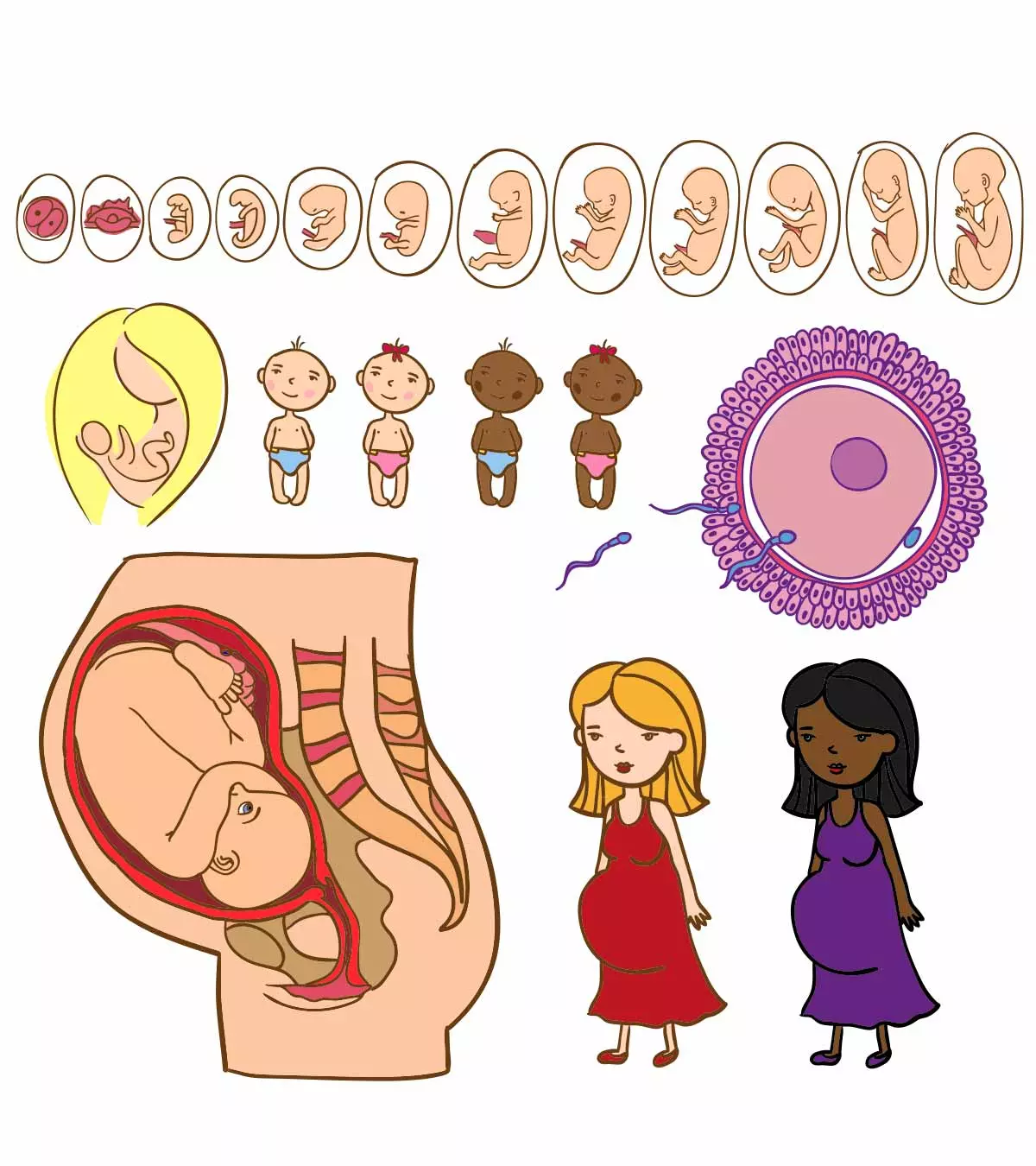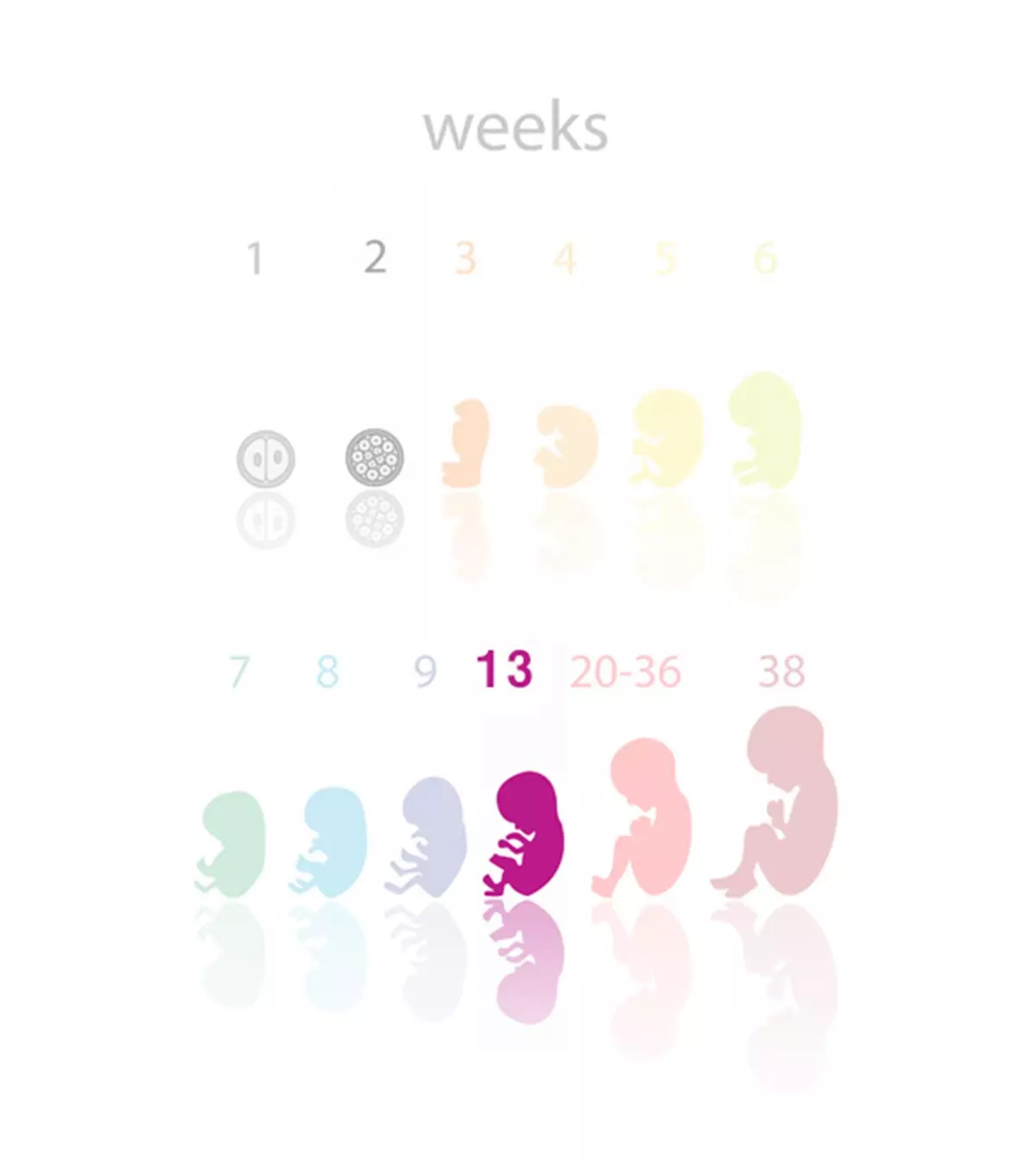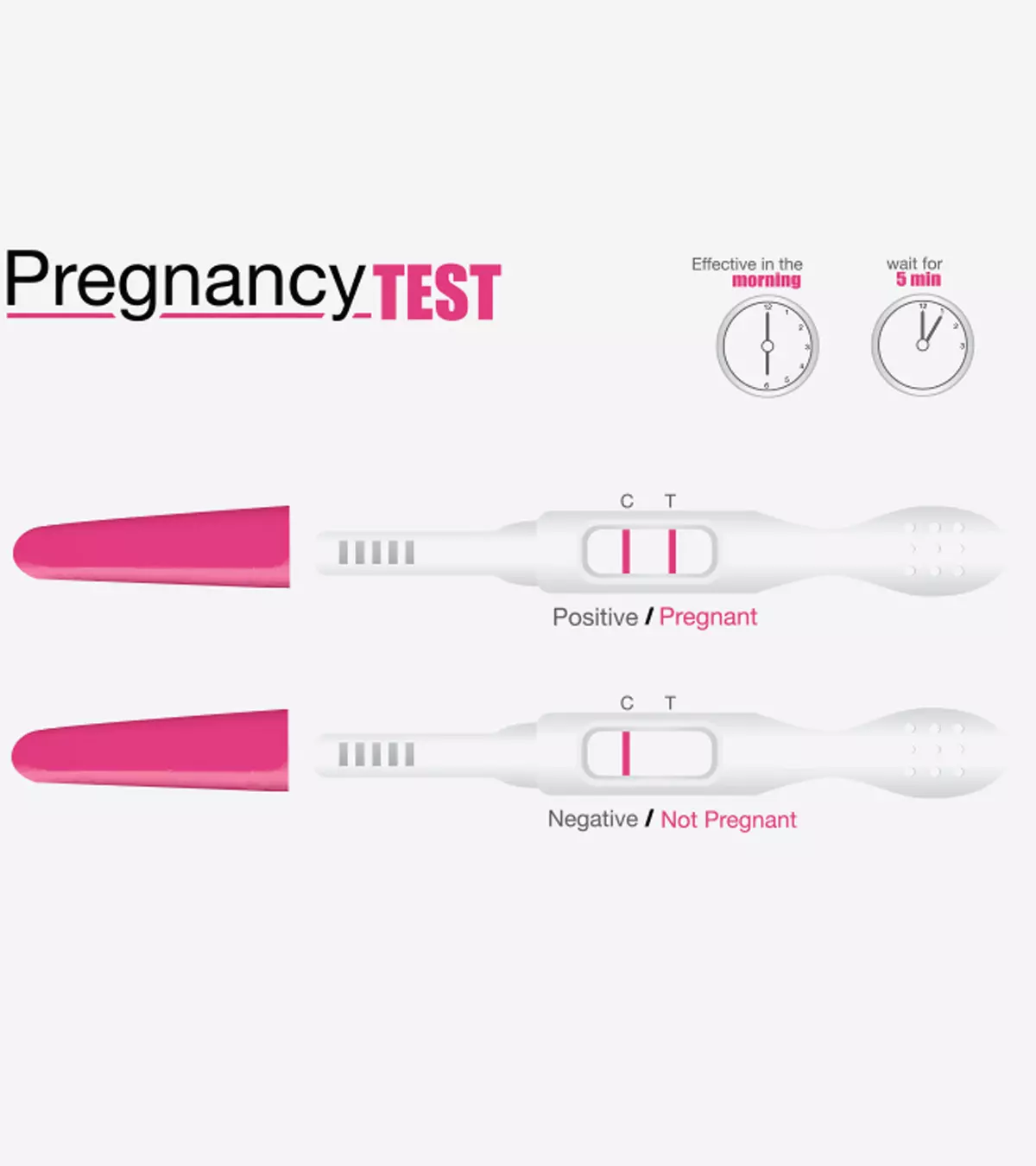
Image: ShutterStock
Performing a pregnancy test at home has become possible due to the availability of ready-to-use kits. These pregnancy test kits are available over the counter at pharmacies. Though you may rely on this test, you need to get several other urine tests done at the clinic throughout your pregnancy. These tests may sound annoying, but their utility ranges from confirming pregnancy to detecting developmental anomalies in the growing fetus. This post presents important information about conducting a home pregnancy test, the various urine tests required during pregnancy, and their significance for you and your baby.

Key Pointers
- A home pregnancy test based on urine test is a simple and accurate way to confirm pregnancy.
- The presence of the Human Chorionic Gonadotropin (hCG) hormone in the urine is detected by these tests.
- The first urine of the day should be used, about two weeks after a missed period, to conduct the test.
- Following the test’s instructions is imperative to avoid a false positive result.
- Although home tests are highly accurate, it is recommended to visit a doctor for confirmation of pregnancy.
What Is Urine Home Pregnancy Test?
During pregnancy, your placenta produces the human chorionic gonadotropiniA placenta-produced hormone that supports and sustains the development of pregnancy (hCG) hormone, which appears in the urine and blood about ten days after your missed period. This is the time when the fertilized egg implants in the uterus (1). The home pregnancy test detects the presence of hCG in urine.
In the initial eight to ten weeks, hCG levels increase rapidly. They reach the peak during the tenth week and then decline until the end of your pregnancy (2).
What Does Urine Test Show?
After how many days pregnancy can be confirmed by a urine test? The urine test confirms pregnancy if you take it around one to two weeks after missed periods. It helps you know whether or not hCG is present in the urine. It is a qualitative test and does not give you the quantity of the hormone present in your body. The presence of hCG is a positive sign of pregnancy.
Steps To Follow For An Accurate Urine Test To Confirm Pregnancy
Follow these simple steps while doing an HPT to get accurate results.
1. Know when to take the test:
Wait for about one to two weeks after you miss your period to get the best results. You may tend to miscalculate when your period is due in the case of irregular periods, and this can affect the test. In fact, out of every 100 pregnant women, 10 to 20 will not be able to detect their pregnancy on the first day of their missed period due to miscalculated periods (3).
 Quick fact
Quick fact2. Check the expiration date:
If you are planning to take a home pregnancy urine test, check for the expiry date, because the newer the pregnancy kit, the better the results. Also check for the condition of the kit packaging (the open seal, wear and tear, etc.).
If you have stocked up a pregnancy kit from months ago, do not use it.
3. Test in the morning:
Going for a morning urine pregnancy test (first urine in the morning) helps you get the most accurate results because your urine is concentrated in the morning with the highest levels of hCG. Do not drink fluids before collecting the urine as it can dilute the hCG levels and alter the results.
4. Collecting the urine sample:
Some home pregnancy kits require you to hold an indicator stick under the urine stream until it soaks completely. This will take about three to five seconds. Some other urine testing kits will require the urine sample to be collected in a cup and test a few drops on the stick.
5. Read the instructions carefully:

Before taking the test, go through the instructions given in the overleaf. Different brands have different specifications, and you need to understand the one you are about to use.
Factors such as the method of collecting the urine, the length of time you need to let the urine stay on the test stick, and the symbols used to prove the results could be different for each brand.
6. Familiarize yourself with the symbols:
You have to know the symbols listed on your pack to understand the reading better. If you are unable to decipher the symbols when reading the results, do not panic. Call the toll-free number listed on the pack to seek help.
7. Prepare yourself mentally:
Testing for pregnancy involves mixed feelings. If you are a first-timer, you are likely to be nervous and jittery. Prepare yourself mentally before taking the test. Talk to your partner and close friends for support and to come out of your fears. Do not worry about the result. Understand that pregnancy is a natural process.
8. Do the test methodically:
Even though a urine test may look like a walk in the park, you follow all the instructions systematically. Begin with reading the instructions, know how to collect the urine sample, and then test it.
9. Wait for the results:
After the test, place the strip horizontally on a clean surface for the readings. Different tests have different time requirements. The waiting time is usually anywhere from one to five minutes but some tests are said to take as long as ten minutes to give the correct result.
Some women panic and keep staring at the strip nervously, waiting for the result. Remember that it will not improve the results. Instead, take a break and set a timer.
Dispose of the strip after the result is out. Do not consider the result if it takes too long to come out. The results may be inaccurate and can give a false positive evaporation line.
10. Checking the final result:
Once the waiting time has elapsed, check for the results. While the symbols vary with brands, the second line appearing on the stick indicates a positive result.
- If you see even a faint line on the pregnancy test strip appearing next to the first one, consider that as a positive. This indicates that the test had picked up traces of hCG in your urine.
- If you are not sure about the line, which is too light and not definitive, wait until the following morning for a retest.
 Point to consider
Point to considerThings To Do After The Results
Reading the results can be a life-changing moment for you. However, this is just the beginning. Make sure you know what to do next after doing the urine test.
Here are some things you need to keep in mind:
1. In the case of a positive result:
If a urine pregnancy test result is positive, make an appointment with your doctor for confirmation and further guidance on the next steps in your pregnancy journey. Your specialist may also recommend a hCG blood pregnancy test to confirm the results of the urine test. In most cases, the results of a urine test are accurate.
2. In the case of a negative result:
If you have missed your period and still the result shows negative, wait for some more time and take the test again. False negatives are sometimes possible. These can happen when you have miscalculated your ovulation date or taken the test earlier than recommended.
How Accurate Are Home Pregnancy Tests?
Home pregnancy tests claim to be 97% to 99% accurate if they are done in the right way (4)
.
However, in certain cases, as discussed below, the result could be a false positive or a false negative.
If you continue to get false results in spite of the symptoms of pregnancy such as missed periods, nausea, fatigue, and breast tenderness, wait to take another test or check with your doctor.
Reasons For A False Positive
Although false positives are rare after a urine test they are not ruled out. A false positive home pregnancy test result is nothing but the test proving that you are pregnant, while in reality, you are not.
Here are some reasons for the false positive result of a urine test. However, the reasons could vary from one woman to another.
1. Chemical pregnancy:
Also known as an early miscarriage, this is a scenario where you could have become pregnant but lost it shortly after the implantation (fertilized egg settling in the uterus).
Kimberly Currie shares her chemical pregnancy experience after an embryo transfer process. Seven days post transfer she tests positive for pregnancy using a home test kit. She goes on to say, “10 days past transfer- The line was drastically lighter. We were once again broken. I did not want to go to my doctors office to get my blood drawn just to know what they were going to say. I went anyways. That afternoon they called me and told me my HCG level was a 12 and anything above a 5 is technically considered pregnant but with the information I gave them they did not think that the pregnancy was going to stick. They wanted me to continue the progesterone and come back in 2 days to see if that number would rise. She adds, “Went in for my final blood draw. That afternoon the nurse called me and said she was sorry but I had a chemical pregnancy and to stop all my medications and that I should expect a period in the next week or so (i).”
2. Missed reaction time:
Reading the results after the recommended time has elapsed can give you a wrong result. Your stick has surpassed the actual reaction time, and there is every chance for it to show a false positive.
3. Medications:
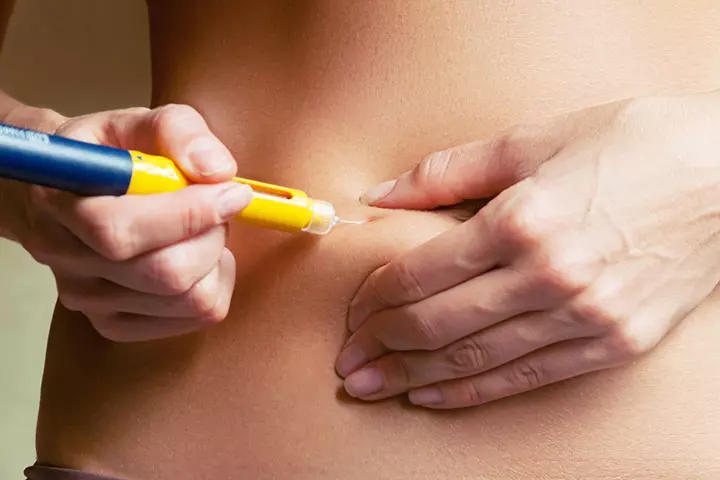
If you are undergoing any medical treatments for fertility, which involves a trigger shot of hCG, make sure there was enough time for the shot to metabolize and clear your system. Usually, fertility experts suggest that you should wait for about 14 days to clear the impact of the hCG shot before taking a pregnancy test.
4. Evaporation line:
This is a deceptive line that comes on the stick in a different color. It looks very similar to the positive line. The test kit indicates a certain color for the positive result, and the test is positive only if the line appears in that color.
Just like a false positive, the test result can be a false negative as well.
Reasons For A False Negative
If the test indicates a negative again and again, do not worry. False negatives are common. See a doctor to find out the reason for your missed period.
False negatives can happen due to several reasons, some of which are listed below (5):
1. Testing too early:
If you undertake a pregnancy test in a sheer rush of anxiety, be prepared for a false negative. You have to wait until it is time to take the test. The chances of getting a false negative are high if you take the test immediately after missing your period.
2. Low sensitivity of the strip:
Despite picking the latest pregnancy kit, there is every chance of your strip being less sensitive while detecting the level of hCG due to a manufacturing defect. If you are not convinced with the negative result, try and retake the test with a different brand of home pregnancy kit.
3. Diluted urine:
This is the very reason why you should take the test early in the morning. If it is taken at other times of the day, the diluted urine might give a misleading result. Sometimes, your early morning urine could also be diluted. In that case, take the test again on the next day. The results could be different.
Even if the test is negative, we suggest you be positive and have a word with your doctor (6).
Once your pregnancy is confirmed, you will have to undergo urine tests at various times during the nine months. This time it will not be at home but at a clinic or lab.
Clinical Urine Test (Urinalysis) At Doctor’s Clinic
Your doctor will recommend a urine test during the first prenatal care visit to confirm the result of the home test and also to rule out any health issues that could pose a danger to your pregnancy. You will continue to have periodic tests during the prenatal appointments (7).
Why is the clinical urine test done?
A urinalysis is usually performed to:
- Check your overall health: Your healthcare provider will recommend it as a part of the regular medical examination, pregnancy checkup, or for screening certain disorders and illnesses such as diabetes and liver disorders.
- Diagnose medical condition: Urinalysis helps diagnose the cause of some problems such as back pain, abdominal pain, pain during urination, or other urinary issues.
- Monitor a medical condition: If you are diagnosed with any urinary disorder or kidney disease, you may have a urinalysis regularly for treatment.
What does a urine test involve?
Urine tests during pregnancy are evaluated in three ways – visual examination, dipstick test, and microscopic exam (8).
Visual examination:
Initially, the pathologist or the lab technician will examine the appearance of your urine. If it is clear, cloudy, has an unusual odor, etc. Unusual color or odor could indicate an infection. Sometimes, the food you eat may also make your blood look different. For instance, beets or rhubarb give a red hue to your urine.
Dipstick test:
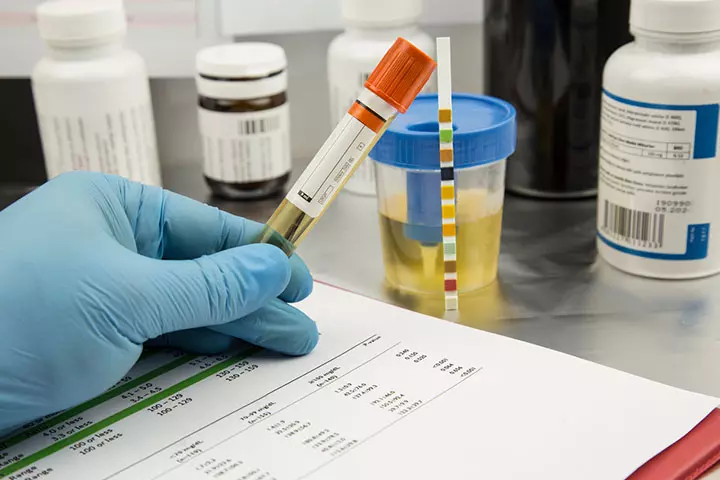
Chemically prepared thin plastic strips known as dipsticks are used to detect abnormalities. They are dipped in your urine sample to screen for some indicators.
- pH (acidity) indicates the acid content in the urine. Abnormal levels detect a urinary tract or kidney disorder.
- Concentration and number of particles dissolved in it. Higher concentrations are a result of not taking enough fluids.
- Sugar quantity Sugar quantity in the urine. High levels indicate gestational diabetesiA condition characterized by elevated blood sugar levels due to hormonal and physical changes in pregnancy .
- Protein levels in urine are usually low. Higher levels are a sign of urinary tract infections (UTI) and kidney issues. In later pregnancy, it can be a sign of preeclampsiaiA pregnancy disorder characterized by high blood pressure, water retention, and protein content in urine associated with high blood pressure.
- If ketones are detected in the urine (which happens when stored fats break down for energy), it indicates diabetes accompanied by weight loss, nausea, and vomiting.
- iBilirubin is produced as a result of the breakdown of red blood cells. It is usually present in the blood, passes through the liver, and then becomes a part of the bile. If it is present in urine, it indicates liver disease or damage.
- If white blood cell products such as nitrites or leukocyte esterase are detected in urine, it is an indication of UTI.
- Blood in the urine may be a sign of kidney or bladder infections, stones, cancers, or other blood disorders.
Microscopic examination:
Some drops are observed under a microscope to check for the following:
- Red blood cells (erythrocytes) – sign of blood disorder, kidney disease or bladder cancers
- White blood cells (leukocytes) – sign of infection
- Casts – tube-shaped proteins which form due to kidney disorders
- Bacteria or yeasts – signs of infection
- Crystals –a result of chemicals present in urine, and indicate kidney stones
The urine test at the clinic will not always diagnose a problem. Sometimes, follow-up tests are required to detect the condition.
Urine Culture Test During Pregnancy
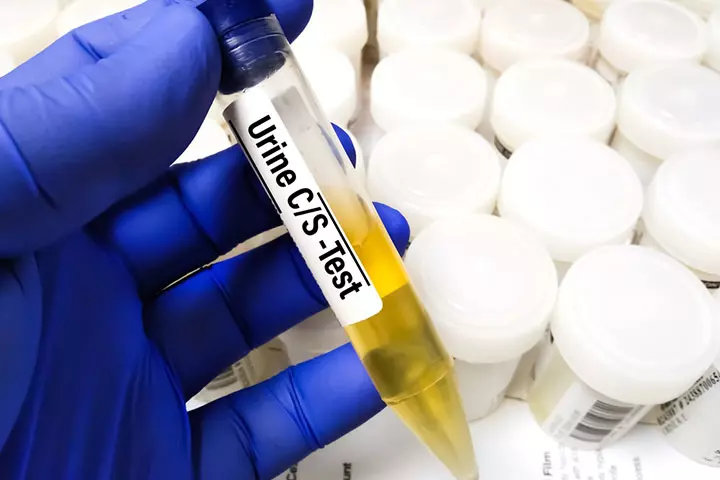
Urine culture is a part of the prenatal examination to detect any bacterial infections that have been existing without symptoms.
Women are prone to urinary infections since their urethra is shorter than males and is closer to the anus. This allows transfer of bacteria from the anal region into the urethra and from there to the urinary tract. You also can get UTI if your partner has it.
Urine culture helps the doctor identify the bacteria and prescribe the right antibiotics. If the culture returns negative, it means your urine is infection-free and hence, you don’t require antibiotics.
A healthy pregnant woman’s urine is sterile and doesn’t contain fungi, bacteria or any other microorganisms (9).
Why Does The Doctor Recommend Urine Culture?
Your OB/GYN will ask for a urine culture to:
- Detect the UTI-causing bacteria.
- Prescribe the right antibiotic through a test called sensitivity testing.
- Find out whether the treatment helped the UTI to clear up completely.
You will have to give a urine sample twice for urine culture. Once to detect the bacteria and later to make sure the infection has cleared up and posed no risk to you or your baby.
Preparing For A Urine Culture:
You don’t have to do anything to prepare for a urine culture. But inform your doctor about the antibiotics that you are currently taking or have just taken.
Usually, the first urine of the day is the best for urine culture, as it will contain high levels of the infection-causing bacteria. Therefore, try not to ease yourself before you give a sample.
Collect the urine midstream.
Collecting Urine Sample:

- Wash your hands before you take the urine sample. This prevents cross-contamination.
- Then clean your vaginal region with a tissue paper to remove any contaminants. Use a front-to-back motion to clean the area.
- Let the urine initially flow into the toilet and then hold the sample cup midstream.
- You may hold the folds of the skin apart while urinating to minimize the chances of contamination.
- Replace the lid after filling the plastic container.
- Wipe the outside of the container well and transfer it to your refrigerator. You can store the urine sample for up to 24 hours before taking it to the lab for analysis.
- Follow the lab’s instructions on when and how to bring the urine sample for urine culture.
If you are worried about urine culture, talk to your healthcare practitioner and clear your doubts and worries. Understand the risks of UTI during pregnancy and the treatment. The more you know, the easier it will be to deal with your situation.
Results Of A Urine Culture:
Since the laboratory has to grow the organisms present in the urine, it takes about one to three days to get the results. Some of the microorganisms take longer than three days to grow in a lab setting. Hence, it could also be a week before you get the complete results.
The report will state the following:
Negative:
This means no bacterium or fungus grew in the culture. You will not require treatment.
Positive: If bacteria or fungi grow in the urine culture, the result will be positive. Usually, if the bacteria count is 100,000 or more per milliliter, it means you have an infection. However, if the bacteria count is from 100 to 100,000, it could be an infection or contamination of the urine sample. You will be asked to give another urine sample so that the culture can be repeated. If the count is 100 or less, infection is ruled out. This is also the result you should expect if the doctor puts you on antibiotics and asks for a second urine culture.
Your test results can be affected due to several reasons, including:
- You are currently taking antibiotics.
- You have just finished a course of antibiotics.
- You are taking diureticsiSubstances that enable the kidneys to produce more urine and get rid of the excess fluid from the body , which dilute the urine sample. This reduces the number of bacteria present in the sample.
- You are consuming a lot of vitamin C.
Frequently Asked Questions
1. How can I check if I am pregnant without a pregnancy test?
Some early signs that would let you know about your pregnancy without taking a pregnancy test are missed period, frequent urination, fatigue, nausea and vomiting, and enlarged and tender breasts. You may also experience spotting, food cravings, cramping, and mood swings (10).
2. Does the sugar pregnancy test work?
A pregnancy test with sugar is a DIY test that involves mixing urine with sugar and waiting for a few minutes to check whether the sugar has clumped or not. If the sugar forms clumps, the test is believed to be positive. However, there is no scientific basis to prove the efficacy of this homemade pregnancy test.
3. What does urine look like during pregnancy?
It is usual for pregnant women to see slight color changes in their urine. However, cloudy urine may indicate dehydration, vaginal discharge, infection, or preeclampsia. You should consult a healthcare provider if you experience other symptoms, such as headache, blurry vision, abdominal pain, and cloudy urine (11).
4. Can a home pregnancy test detect ectopic pregnancy?
A home test may be able to detect traces of hCG in the case of a confirmed implantation, but it cannot determine changes in hCG levels, the type of pregnancy, or the location of the implantation. However, an ectopic pregnancy may show other symptoms and can be confirmed through an ultrasound or laparoscopy (13).
A pregnancy test at home may be conducted using commercially available test kits. They offer privacy and convenience, as it is easy to use and affordable for women who want to quickly and discreetly determine whether they are pregnant or not. Utilizing a highly sensitive kit may also facilitate early detection of pregnancy (5). It tests the presence of the pregnancy hormone hCG. Knowing the appropriate time to take the test and the correct method to perform it makes the results more reliable. Make sure you carefully go through the instructions in the leaflet that comes with each kit and avoid using kits past their expiry date. Conditions such as a chemical pregnancy or certain medications may produce false positives. However, consult with your doctor and prepare for taking confirmatory tests once you obtain a positive result with the home pregnancy testing kit.
Infographic: Reasons For A False Positive Or Negative Home Pregnancy Test Results
Home pregnancy test kits are the first method typically used by women to check their pregnancy status. However, their accuracy can be affected for many reasons, as listed in the infographic below. These causes could result in false positive or false negative results from urine-based home pregnancy testing.
Some thing wrong with infographic shortcode. please verify shortcode syntaxIllustration: Simple Steps To Do Urine Pregnancy Test At Home

Image: Stable Diffusion/MomJunction Design Team
Personal Experience: Source
MomJunction articles include first-hand experiences to provide you with better insights through real-life narratives. Here are the sources of personal accounts referenced in this article.
i. Our journey for a miracle baby.https://kimberlycurrie.blogspot.com/
References
- Pregnancy test Medline Plus.
https://medlineplus.gov/ency/article/003432.htm - Pratap Kumar and Navneet Magon; (2012); Hormones in pregnancy.
https://www.ncbi.nlm.nih.gov/pmc/articles/PMC3640235/ - Pregnancy USFDA.
https://www.fda.gov/medical-devices/home-use-tests/pregnancy - Michael F. Evans; Diagnosing Pregnancy: What is the best way.
https://www.ncbi.nlm.nih.gov/pmc/articles/PMC2277596/pdf/canfamphys00048-0081.pdf - C. Gnoth and S. Johnson; (2014); Strips of Hope: Accuracy of Home Pregnancy Tests and New Developments.
https://www.ncbi.nlm.nih.gov/pmc/articles/PMC4119102/ - Rolando Valenzuela et al.; (2015); False-positive urine pregnancy tests- clinicians as detectives.
https://www.ncbi.nlm.nih.gov/pmc/articles/PMC3201605/ - Urinalysis Medline Plus.
https://medlineplus.gov/urinalysis.html - Urinalysis.
https://www.ncbi.nlm.nih.gov/books/NBK279350/ - Urine Culture Testing.com
https://www.testing.com/tests/urine-culture/ - Pregnancy: Am I Pregnant?
https://my.clevelandclinic.org/health/articles/9709-pregnancy-am-i-pregnant - Cloudy Urine; Cleveland Clinic.
https://my.clevelandclinic.org/health/symptoms/21894-cloudy-urine - Pregnancy Tests.
https://www.plannedparenthood.org/learn/pregnancy/pregnancy-tests# - Pregnancy test, UCSF
https://www.ucsfhealth.org/medical-tests/pregnancy-test
Community Experiences
Join the conversation and become a part of our nurturing community! Share your stories, experiences, and insights to connect with fellow parents.
Read full bio of Michael Fleischer
Read full bio of Rebecca Malachi
Read full bio of Swati Patwal
Read full bio of Aneesha Amonz





